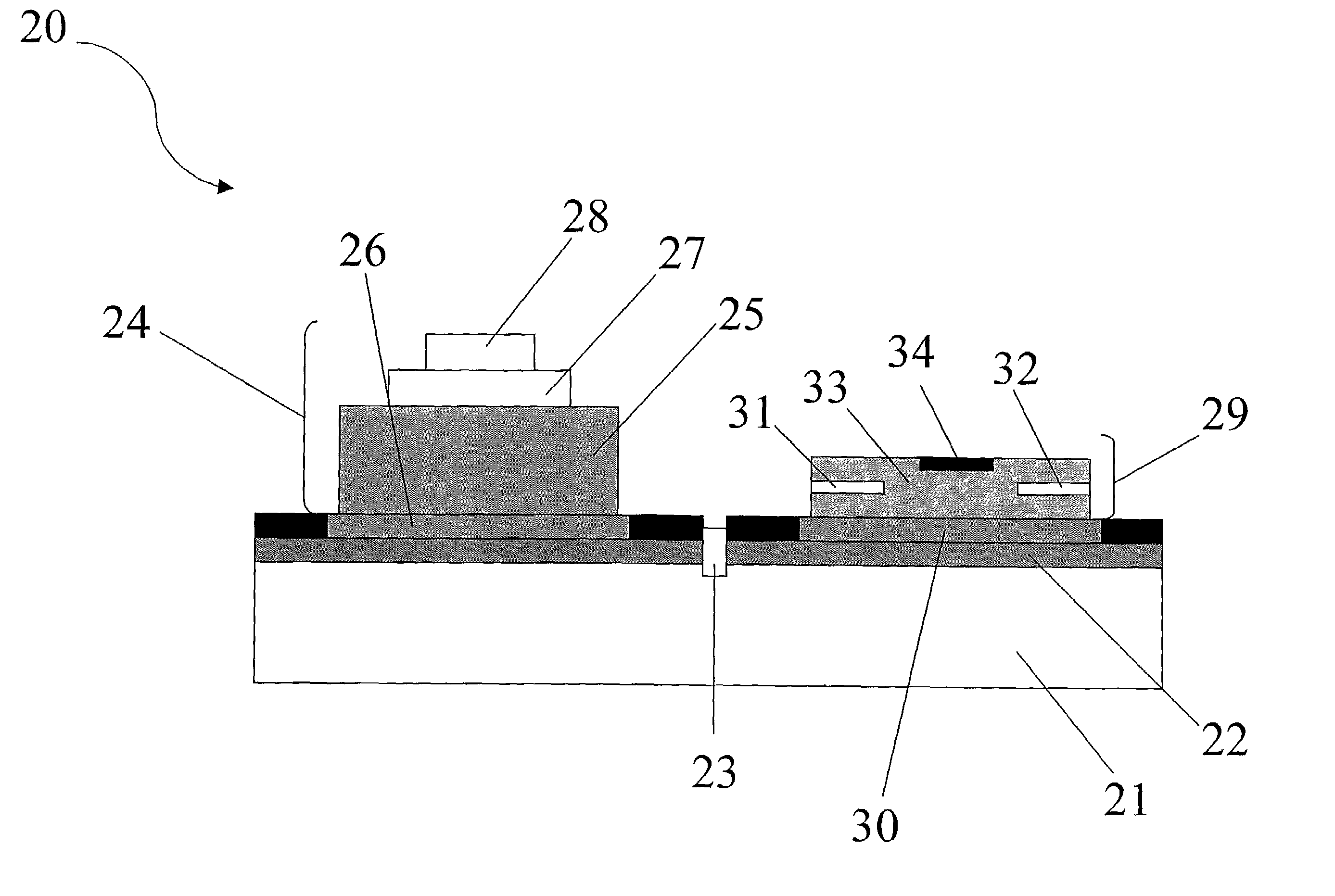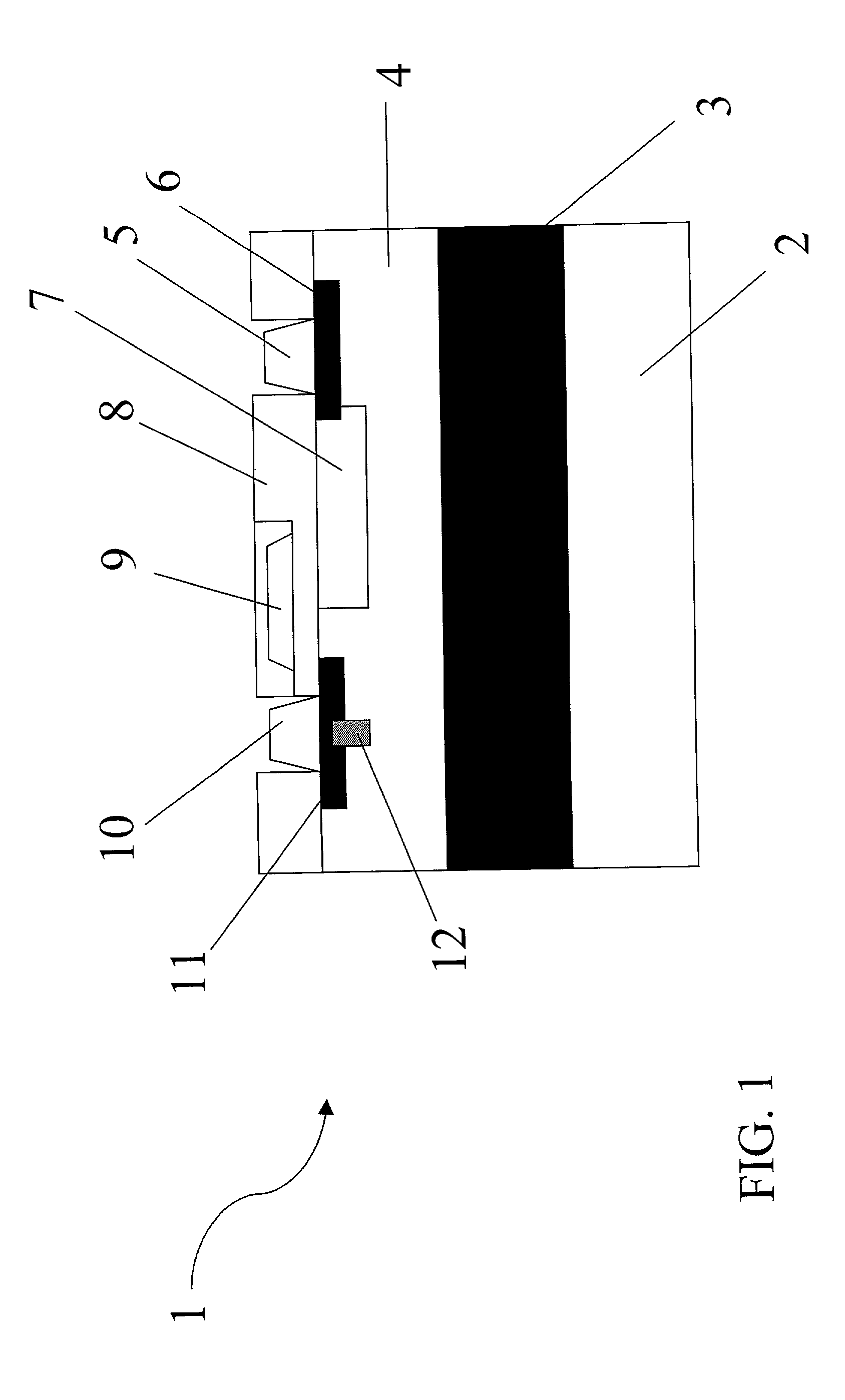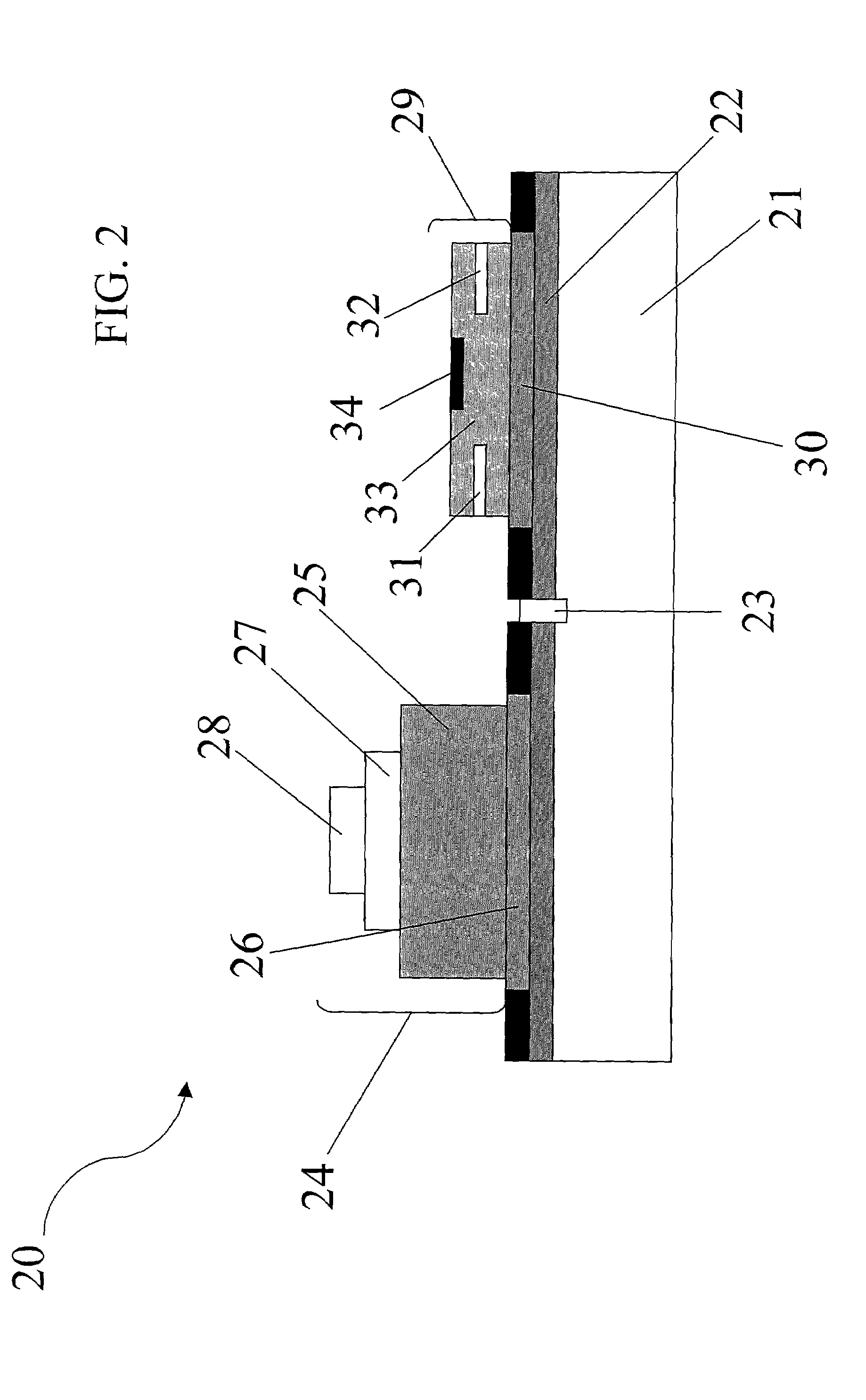Silicon carbide and related wide-bandgap transistors on semi-insulating epitaxy for high-speed, high-power applications
a wide-bandgap transistor and semi-insulating epitaxy technology, applied in the field of advanced microelectronic devices, can solve problems such as inability to use current implant technology in si
- Summary
- Abstract
- Description
- Claims
- Application Information
AI Technical Summary
Benefits of technology
Problems solved by technology
Method used
Image
Examples
Embodiment Construction
[0016]The present invention provides for a silicon carbide semi-insulating (SI) epitaxy layer used to create an entire class of power devices and integrated circuits with significant performance advantages over conventional devices. This technology is analogous to the commercially available Silicon-on-Insulator (SOI) structure, but provides advantages over the existing SOI structure, including homoepitaxy, which improves thermal conductivity and dissipation over the existing SOI structure, which is typically an insulator having significantly different thermal conductivity characteristics from the SiC based substrate upon which the structure is formed.
[0017]A requirement for electrical isolation between devices made on conducting substrates is that the epitaxial film be both thick enough and resistive enough. In general, the epitaxial film must be thicker than several diffusion lengths to ensure that carriers injected from the top by the device or from the bottom by the conducting su...
PUM
 Login to View More
Login to View More Abstract
Description
Claims
Application Information
 Login to View More
Login to View More - R&D
- Intellectual Property
- Life Sciences
- Materials
- Tech Scout
- Unparalleled Data Quality
- Higher Quality Content
- 60% Fewer Hallucinations
Browse by: Latest US Patents, China's latest patents, Technical Efficacy Thesaurus, Application Domain, Technology Topic, Popular Technical Reports.
© 2025 PatSnap. All rights reserved.Legal|Privacy policy|Modern Slavery Act Transparency Statement|Sitemap|About US| Contact US: help@patsnap.com



